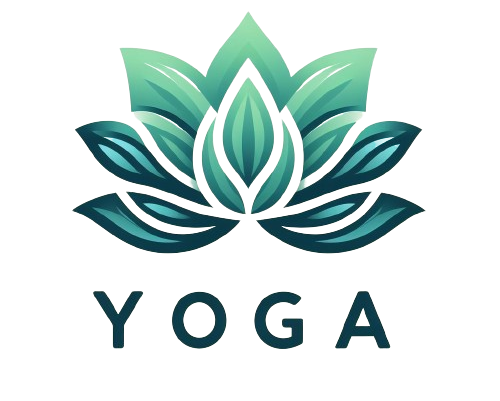YOGA COLUMBUS
Yoga, a time-honored practice deeply rooted in ancient traditions, transcends its historical origins to offer contemporary benefits. It is not merely a sequence of stretches or a fitness regimen. Yoga embodies a holistic philosophy promoting overall health and well-being. Yoga comprises a series of postures, or ‘asanas,’ meticulously crafted to enhance flexibility, improve balance, and cultivate strength. These poses, adaptable for practitioners at any skill level, provide a diverse range of advantages, contributing to physical, mental, and emotional wellness. Yoga offers a pathway for individuals to tailor their practice according to their unique needs and abilities. As we explore various essential yoga poses, each will be illuminated with its distinct benefits, empowering you to understand the profound impact they can have on your holistic health.
The Downward Dog
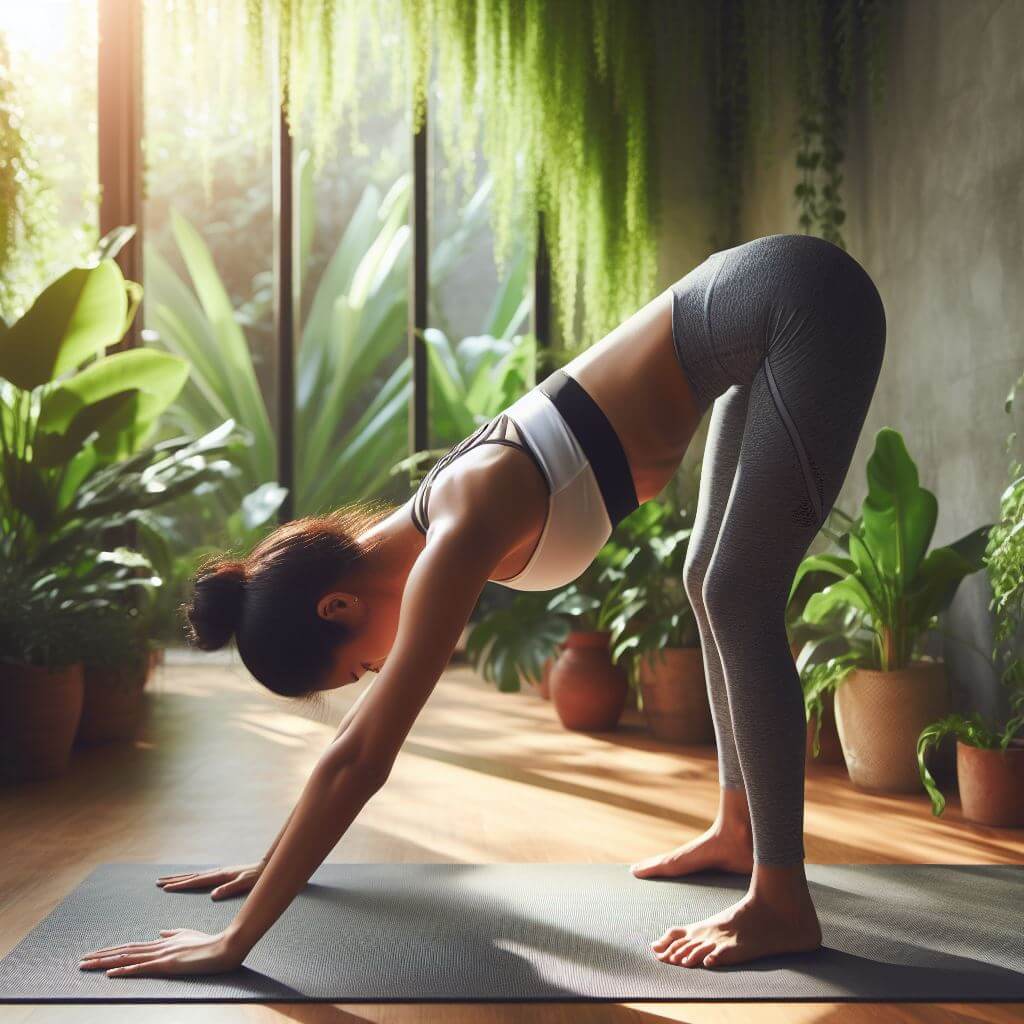
The downward dog yoga pose, also known as Adho Mukha Svanasana in Sanskrit, is a fundamental and widely practiced pose in yoga. It is often part of the sun salutation sequence and is considered a transitional pose.
To get into the downward dog position, start on your hands and knees with your wrists directly under your shoulders and knees under your hips. Spread your fingers wide for stability.
Tuck your toes, lift your hips towards the ceiling, and straighten your legs, creating an inverted V-shape with your body. Ensure your heels are grounded and your head is positioned between your arms, allowing your neck and spine to be in a neutral position.
Engage your core, press through your palms, and actively push your hips upward, aiming for a lengthening stretch in your spine and the back of your legs. Downward dog is excellent for stretching and strengthening the entire body, including the shoulders, hamstrings, calves, and arches of the feet. It also helps improve circulation, calm the mind, and build upper body strength. Regular practice of this pose can contribute to increased flexibility and overall well-being.
The Warrior 1
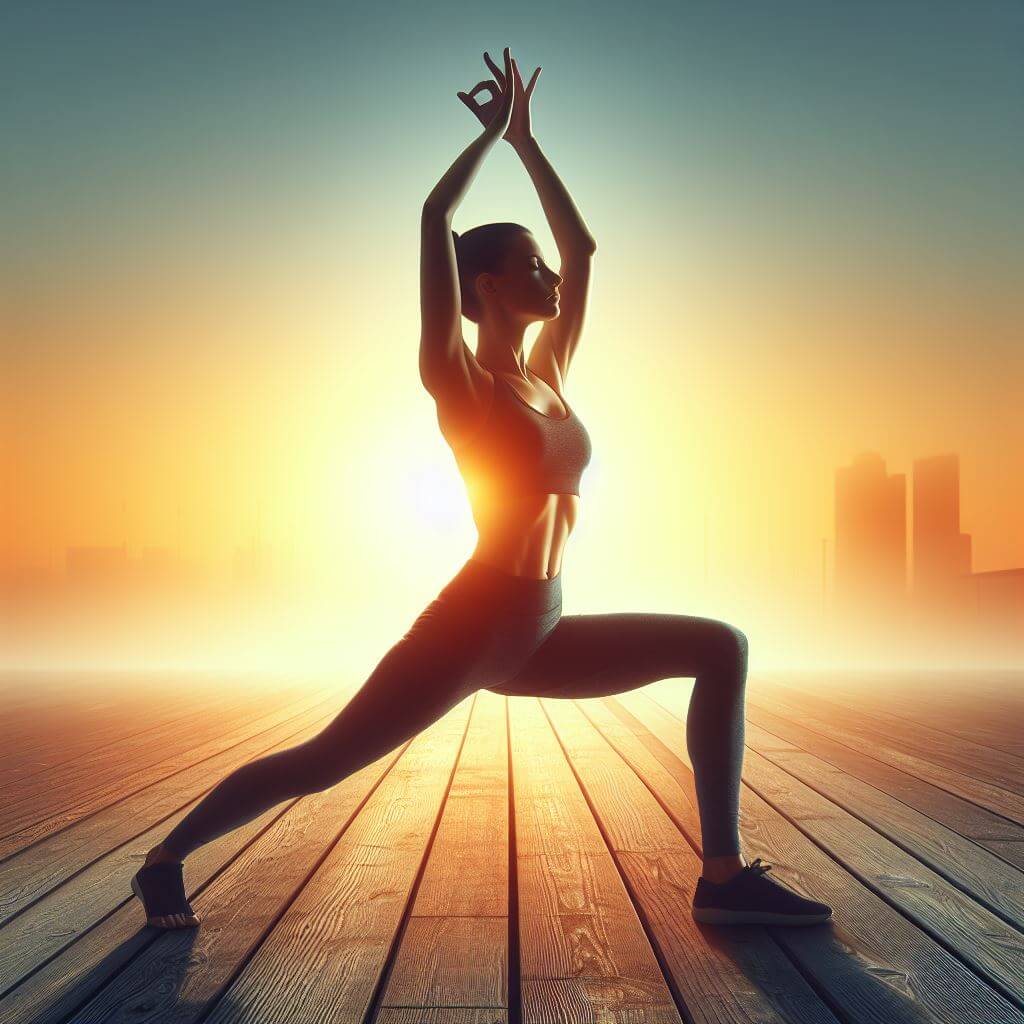
The Warrior 1 yoga pose, or Virabhadrasana I in Sanskrit, is a powerful and grounding posture that strengthens the legs, opens the chest, and engages the core.
Start in a standing position at the top of your mat with your feet together. Step one foot back, keeping it at a 45-degree angle, while maintaining a bend in the front knee.
Ensure your front knee is directly above your ankle, creating a 90-degree angle, and your back leg is straight with the foot firmly planted on the mat.
Square your hips and shoulders towards the front of the mat. Inhale as you lift your arms overhead, bringing your palms together or keeping them shoulder-width apart. Lift your chest and gaze forward, elongating your spine.
Engage your core muscles and press through the outer edge of your back foot for stability. The Warrior 1 pose promotes mental focus and concentration. It helps cultivate a sense of inner strength, balance, and confidence. Regular practice of Warrior 1 can enhance flexibility in the hips, thighs, and shoulders while fostering a grounded and centered state of being.
The Warrior 2
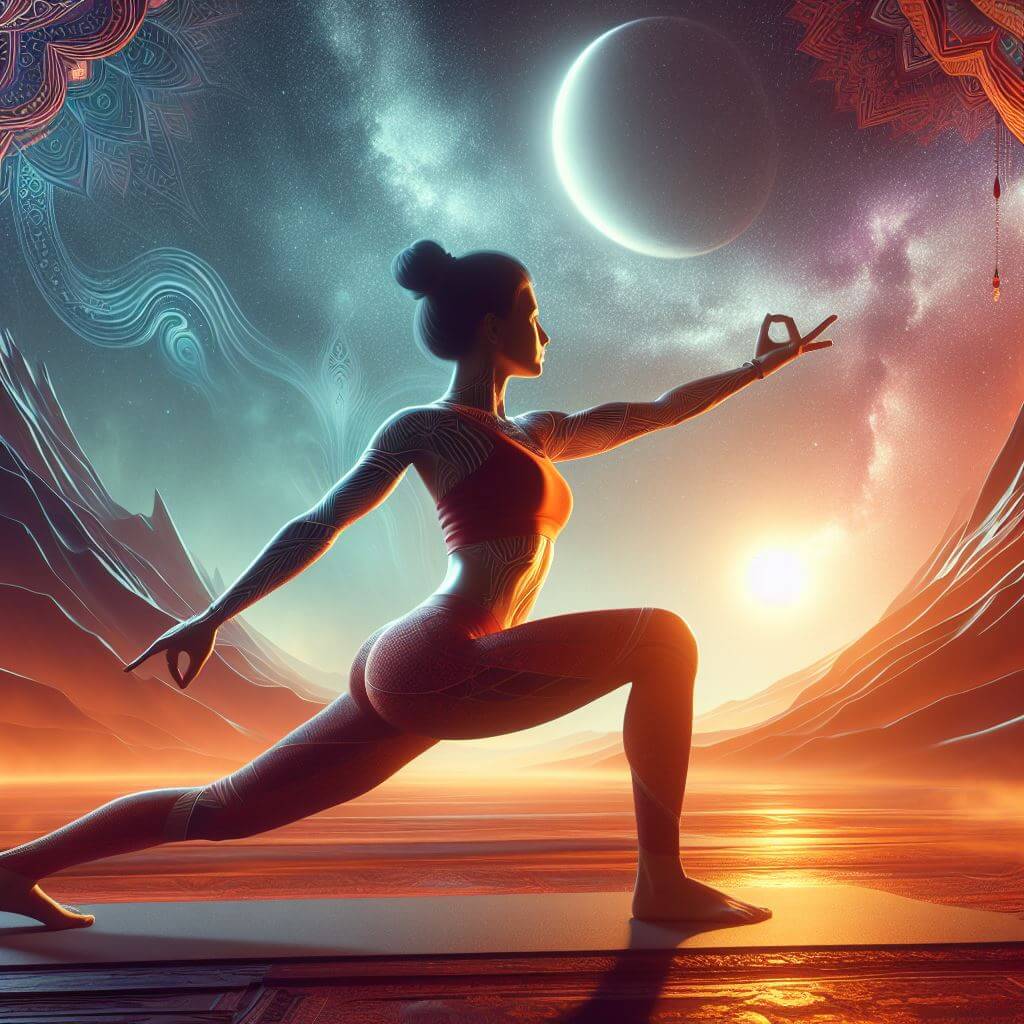
The Warrior 2 yoga pose, or Virabhadrasana II in Sanskrit, is a dynamic and energizing posture that strengthens the legs, opens the hips, and enhances overall stability.
Begin in a standing position at the top of your mat with your feet together. Step one foot back, keeping it parallel to the back edge of the mat, creating a wide stance.
Extend your arms parallel to the ground, with your palms facing down, forming a straight line from fingertip to fingertip. Bend your front knee to a 90-degree angle, ensuring it aligns directly over your ankle.
Turn your hips and shoulders to face the side of the mat, keeping them open. Gaze over your front fingertips, maintaining a strong and steady gaze.
Engage your core muscles, relax your shoulders, and lengthen your spine. The Warrior 2 pose is excellent for building strength and endurance in the legs, toning the muscles, and improving flexibility in the hips and groin. It also encourages a sense of determination and focus, making it a powerful posture for cultivating both physical and mental resilience through consistent practice.
The Cobra Pose
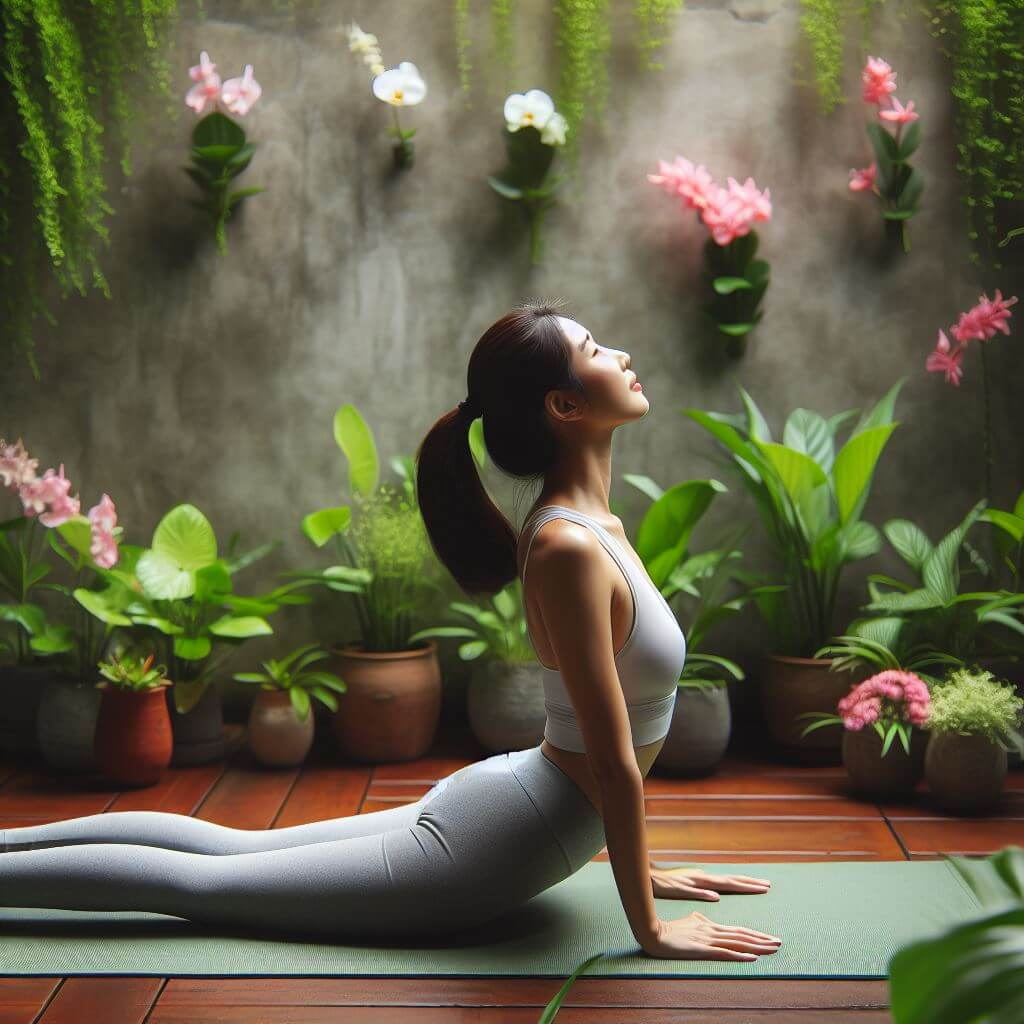
The Cobra Pose, or Bhujangasana in Sanskrit, is a rejuvenating and backbending yoga pose that promotes flexibility and strength in the spine while opening up the chest and shoulders.
Start by lying on your stomach on the yoga mat with your legs extended straight back and the tops of your feet pressing into the mat.
Place your palms on the mat, directly under your shoulders, with your fingers spread wide and pointing forward. Engage your leg muscles, pressing the tops of your feet and thighs into the mat.
Inhale as you gently lift your chest off the mat, keeping your elbows slightly bent and close to your body. Use the strength of your back muscles to lift your upper body, extending the spine and arching backward. Ensure your pubic bone remains grounded, and avoid putting excessive pressure on your hands.
Keep your gaze forward or slightly upward, without straining your neck. Hold the pose for a few breaths, breathing deeply and feeling the stretch along your spine and in the front of your body.
The Plank
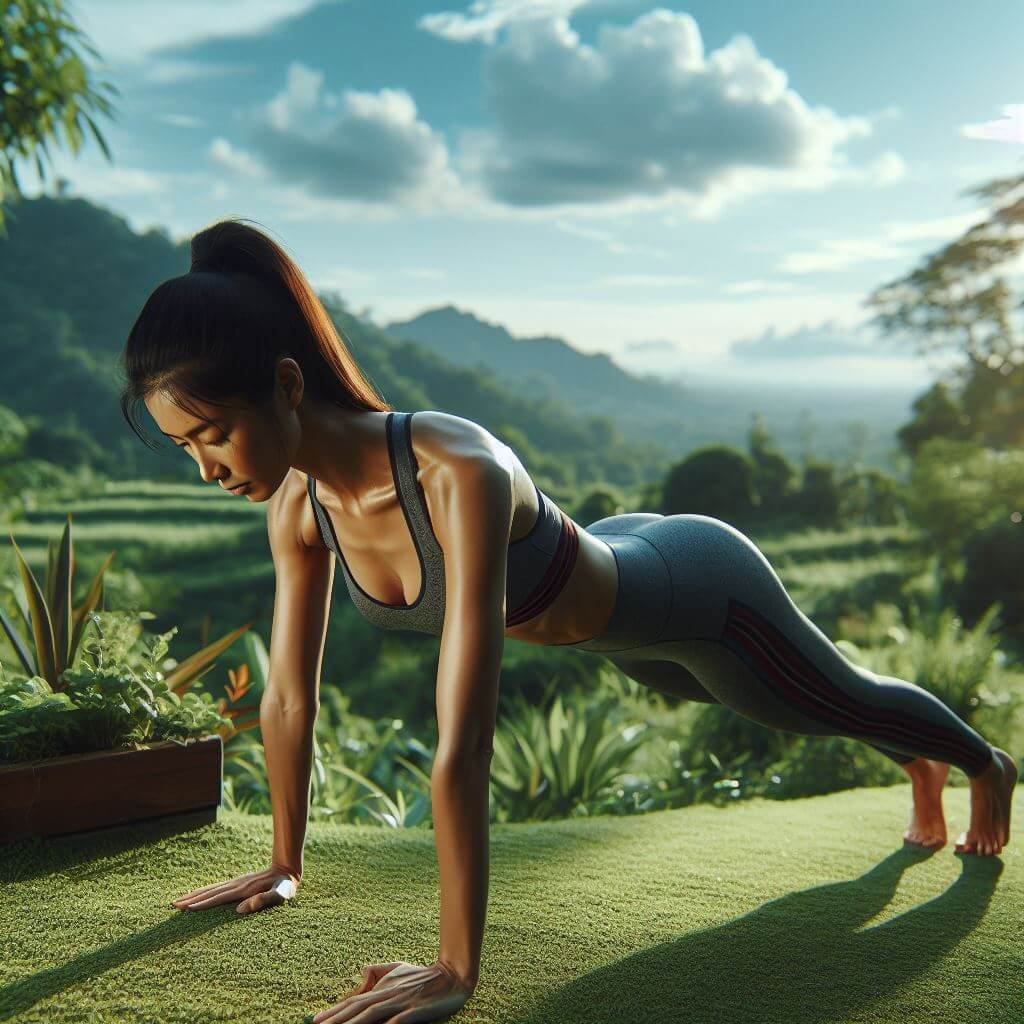
The Plank Pose, or Phalakasana in Sanskrit, is a foundational yoga pose that primarily targets the core muscles while also engaging the arms, shoulders, and legs.
Begin on your hands and knees in a tabletop position, aligning your wrists directly under your shoulders and your knees under your hips.
Step your feet back, extending your legs straight behind you. Engage your core muscles to create a straight line from your head to your heels, avoiding any sagging or lifting of the hips. Spread your fingers wide and press through the palms, keeping your shoulders stacked over your wrists. Maintain a neutral neck and gaze, looking slightly forward to avoid straining the neck. Keep your body in a strong, plank-like position, with the emphasis on a long, straight spine and active engagement of the abdominal muscles. Hold the pose for as long as comfortable, focusing on steady and controlled breathing.
The Plank Pose is an excellent full-body strengthening exercise, targeting the muscles of the core, arms, and legs.
It also helps improve posture, build endurance, and enhance overall stability.
